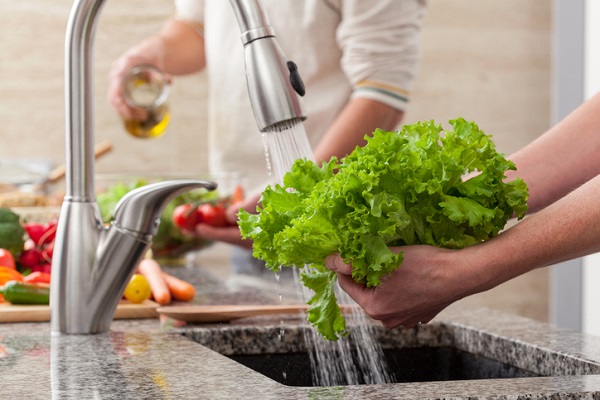Food poisoning is a nasty sickness to endure, especially after spending plenty of money in a restaurant or grocery store. It’s also a source of embarrassment and concern for the food industry professional who caused such unease for a member of the paying public. Food handler training is vital in preventing such costly mistakes, and providing a positive experience for the customer.
Salmonella is very prevalent in our food, but there are everyday tasks which can be carried out to kill off these harmful bacteria. Professionals working within the food industry must be particularly cognizant of the dangers because they are in constant contact with a wide range of food from a variety of different locations. The dangers of salmonella can be erased, however, by introducing and following strict protocols when it comes to food selection and preparation. Before we look at those preventative measures, let’s take a closer look at where salmonella comes from.
Salmonella Is Commonly Found in Some of Our Favourite Foods
Salmonella bacteria are found in the intestines of people and animals, and can therefore be spread through their feces. This fecal matter can easily find its way into the food chain, so preventative measures are needed to stop it causing harm to consumers. A highly regarded food handler exam deals with the possible salmonella contamination of a wide variety of foods. Raw meat and poultry, such as chicken, are most commonly associated with this type of bacteria, but food industry professionals should be aware that it is prevalent in much more.
Seafood is a risk if it comes from contaminated water, and raw eggs can sometimes contain salmonella bacteria as well. Fruit and vegetables can also come into contact with harmful bacteria through use of fertilizer manure or contaminated water during the growth or transportation process.

Wash fruit and vegetables to remove salmonella bacteria
Clean, Separate, Cook, and Chill After Earning Your Food Handling Certificate
It should be assumed that chicken and other raw forms of meat contain salmonella. Beware of all the kitchen counters and utensils which come into contact with raw meat, and clean them thoroughly with soapy water. Prevent cross-contamination by using different cooking equipment for meat and fruit/vegetables. These types of foods should be separated in storage too.
Salmonella bacteria are killed during cooking, so make sure you allow sufficient preparation time for each type of meat. A thermometer can be used to make sure meat is the right temperature before being served (63°C for beef and 74°C for poultry). Chilling foods, through refrigeration or freezing, is also imperative to prevent the growth of harmful bacteria, so pack away food products in suitable storage as soon as possible.
Beware of Less Obvious Means of Salmonella Bacteria Contamination
Professionals with a food handling certificate pay close attention to where their food is coming from. Some raw material producers are more alert to salmonella contamination than others, and it’s a particular concern with crop related products. Food handlers should also spot potential ways for salmonella to be dragged into the workspace by employees. Pigeons and rodents are salmonella sources, and their droppings could easily become lodged in the shoes of those entering the building.
The risk of salmonella contamination also rises if a particular food business is based in a rural area. The higher prevalence of animals and crops can lead to bacteria entering the airflow, so make sure that air filters are functioning properly.

Recognize potential contamination risks from farm to fork
Learn more about best safety practices by taking a food handling course in Toronto.
Check out AAPS for more details about our certificate program.




